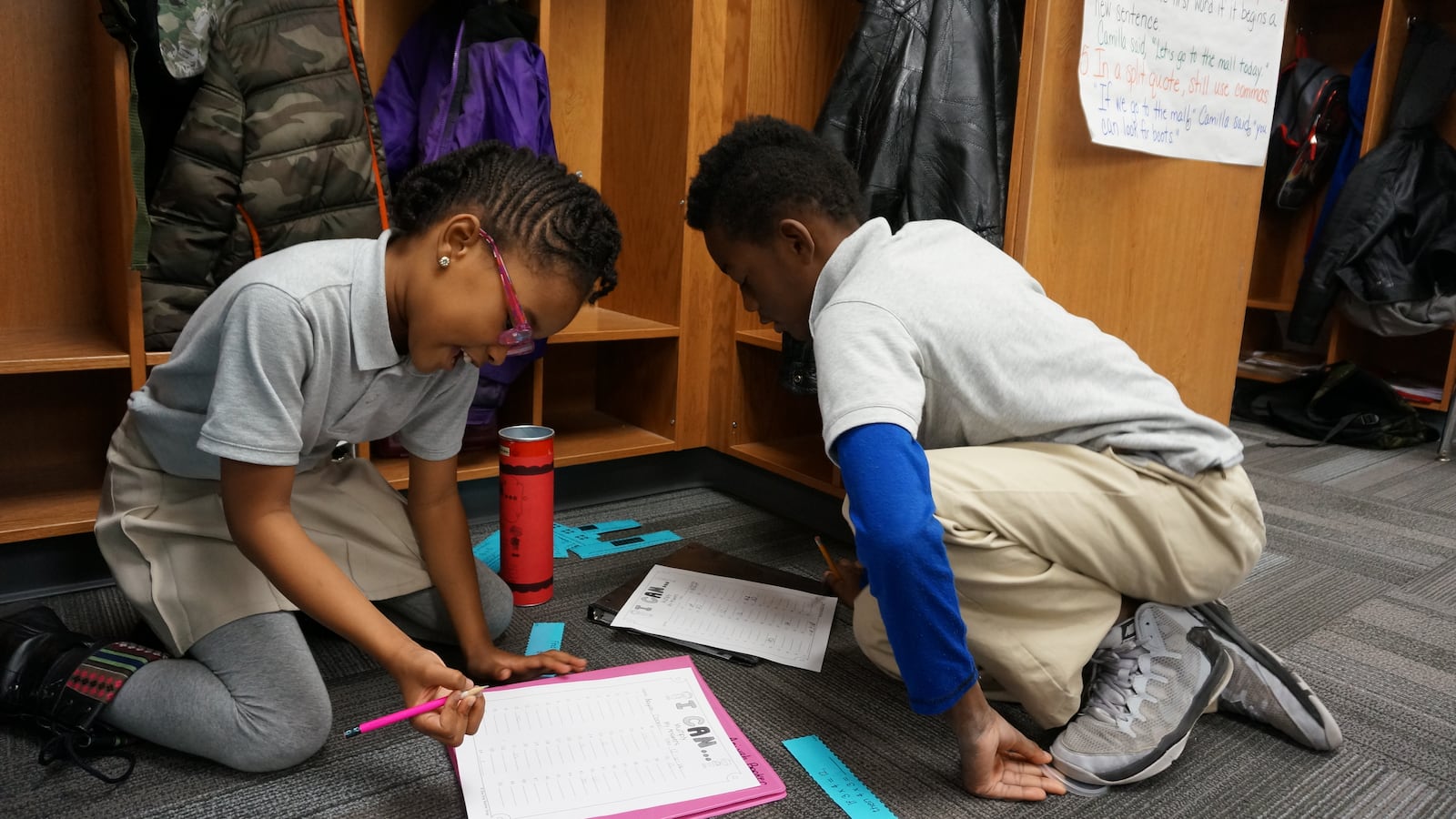Indiana’s Republican leaders want to give state teachers a raise — but they don’t necessarily want to give districts more money to do it.
Districts would have to cut costs in other areas to push more dollars into teacher salaries, under part of House Republicans’ education plan for 2019. The goal for school districts would be to use 85 percent or more of their state funding for instruction-related costs, such as teacher salaries.
The proposal, which comes amid a groundswell of support for teacher pay bumps, shifts the responsibility to schools to trim budgets from areas that lawmakers say aren’t as influential on student learning, such as administrative costs, transportation, or food service.
The House’s solution for bridging the teacher pay gap doesn’t go as far as some would like. Since there are no requirements that schools spend their money in a particular way, the proposal does not guarantee that districts would pass on cost-savings to teachers.
“Would I like to see more teeth to it? Sure. But I think that may come down the line,” said Teresa Meredith, president of the Indiana State Teachers Association, the state’s largest teachers union.
The House plan further deflates expectations for considerable teacher raises in 2019. Although House Speaker Brian Bosma, Gov. Eric Holcomb, and other state education leaders have made strong calls for raising teacher pay, plans so far are vague. Details that have emerged, including this new proposal, make it unlikely that raises could happen quickly.
Unlike more dramatic moves that other states, such as Oklahoma and West Virginia, have taken to boost educator salaries in a year when teacher walkouts have dominated national education conversations, this plan requires little financial investment from the state. Instead, it puts the onus on schools and districts to find extra money for teachers in their existing budgets.
If anything, the proposal in House Bill 1003 could create more bureaucratic hoops for schools and districts to jump through and could heap extra reporting requirements on the very administrators lawmakers are suggesting districts pare down.
The guidelines would come with consequences for public school districts that can’t meet the 85 percent goal. If they don’t comply, they would be put on a list and required to communicate to their board and the public that they transferred more than 15 percent of their state dollars away from classroom expenses. Then, the district leaders would be required to submit a report to the Indiana Department of Education and State Board of Education explaining why they didn’t meet the goal and how they intend to meet it going forward. If that plan doesn’t pass muster with the education department, district leaders could be asked to present to the state board in a public hearing.
Sen. Eddie Melton, a Democrat from Merrillville, said the plan is an unreasonable ask of already cash-strapped districts that have “done all they can to ensure that teachers receive adequate pay.” He added that it’s “incumbent on the General Assembly to find the dollars to support them in that effort.”
The proposal works as part of a new school finance system created in 2017 that aimed to simplify school budgeting, give schools more flexibility to control how they spend, and drive more money to the classroom.
The new system, which went into effect this month, collapsed several pools of money districts use down into three funds: ones for education, operations, and debt service. The education fund houses all expenses related to student learning, much like the general fund did previously. The operations fund would replace several of the other funds, including capital projects and transportation, and draws dollars from local property taxes as well.
The goal would be for schools and districts to transfer only 15 percent of the money they receive from the state from the education fund to the operations fund. Bosma said the 85 percent figure came from conversations with the teachers unions and other education groups, as well as examining budgets from districts across the state. Bosma said he did not yet know how many schools already spend 85 percent of their state dollars on classroom expenditures.
“This 85 percent goal, there are some school (districts) that far exceed that,” he said. “This is not a mandate, it’s a guideline.”
Previous state estimates on how much of schools’ dollars go to the classroom are based on the old budgeting system and include funding that state law currently says can’t be spent on instruction at all. Plus, Indiana can’t isolate teacher salaries and benefits from those of other licensed educators in order to see how much schools and districts spend on them alone.
Lawmakers have indicated that it’s going to be a tough year to increase spending on education, with numerous priorities competing for finite resources. Indiana is on track to have slightly more state revenue than what lawmakers predicted earlier this fall, but higher-than-expected Medicaid costs and steep funding requests from the Department of Child Services leave about $35 million left for everything else.
Bosma said an overall increase for K-12 funding is expected when budget drafts are released in the coming months, but he declined to put a number on it. Typically, schools have received funding increases of between 2 and 3 percent each of the past few years.
Correction: Jan. 9, 2019: This story has been updated to reflect that the provisions of the bill apply only to public school districts.


